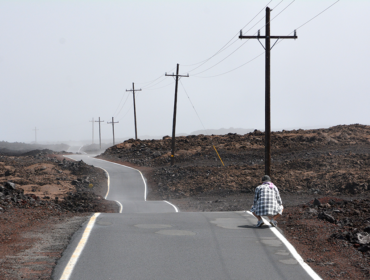Chris Solinsky, last weekend, was the first American runner below the 27-minute barrier over 10,000m. Solinsky is the heaviest runner ever to break 27 minutes, and by some margin too. Solinsky is a relative giant at 73 kg to the runners above him. Bekele at 54 kg, Gebrselassie (56 kg), Tergat (63kg) and Sammy Wanjiru (52kg) are some of the names on that list.
There are only 30 men in history who have done it, but Solinsky is 9 kg heavier than the next heaviest guys (Mohammed Mourhit and Mark Bett at 64 kg). In other words, until Solinsky, nobody heavier than 65kg had run sub-27 minutes, which is quite remarkable!
He is also the tallest. Paul Tergat held that record, but Solinksy is 3 cm taller than him, and the second slowest in history over 5,000m to break 27 minutes, but that should change when he gets to the track later this year.
On this weekend I myself have been in the midst of a triathlon race. It was amazing how size and especially weight were one of the main concerns and issues in the ongoing pre-race chit-chat. There is one faction that believes – the word belief is very crucial – leanness is of fundamental importance, especially, if you want to perform on the run. But as you know there are famous triathletes who are big and successful too, among them famous Chris McCormack, but also Ronnie Schildknecht from Switzerland, Torbjørn Sindballe from Denmark are big guys, and far beyond of being unsuccessful. Therefore you find another group of athletes and coaches who are stressing the fact that endurance needs glycogen stores that can be retrieved during a race, energy that is ready for use, and does not need to be metabolized through the gut during a race.
The proof of concept for either approach is still missing. One may assume that the necessary scientific evidence is not possible to give, because we start out from inadequate premises. There are strong arguments for both factions and for all other sizes. So we might be obliged to reconsider our logic and explanatory approaches. Perhaps both conclusions that a light body can runs faster and is more economic than a heavy one, and that a heavy one is superior to light due to more energy stores, may not apply.
Could it actually be that the body as whole, its balance, its proportions, its compositions may play a major role, its genetic outfit that determines to a large extent the resilience and robustness of an organism, and its capacity to process and respond to stress factors? Could it be that the body as a whole generates our abilities to perform, and depending on this whole performance levels vary among individuals in a wide range.
My work with biestmilch, one of nature’s most complete and vivid substances, taught me many a lesson during the last decade. I had to realize that there is not one one-to-one, not a single one-cause-one-effect relation within our body. Complexity science underlines that notion in many ways, and proves that the trend in up-front science leaves the path of the one cause – one effect concepts.




